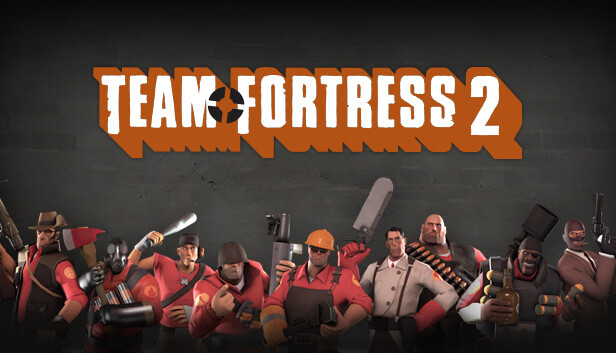What timeline is TF2 set?
As an avid Team Fortress 2 gamer and content creator, one of my favorite aspects of this wildly silly yet enduring multiplayer shooter is its vibrant 1960s setting. Nearly 15 years after launch, TF2 still stands out with its stylized retro backdrop centered around the fateful year of 1968. From in-game calendar clues to comic book storylines, Valve has cemented the late 60s as the canonical timeframe for RED and BLU‘s endless Gravel Wars.
The Summer of 1968: TF2‘s Canonical Beginning
The original TF2 comics provide our earliest concrete proof of a 60s setting. In Issue #6, released in August 2013, we see Soldier and Demoman recruitment advertisements dated June 16, 1968. This matches the June 1968 calendar month visible in TF2‘s map environments. While the actual gameplay matches are timeless snapshots of endless conflict, the late 1960s emerge as the clear origination point for gathering mercenaries.
Why 1968 exactly? It likely wasn‘t random. Being a major wartime year correlated with upheavals like Vietnam clashes and unrest at home, 1968 marked a pivot point in American history. By launching its silly war in this specific year, Valve implants the game directly amidst major mid-century battles. It also tapped into the last moments before technology radically evolved in the 1970s – allowing TF2‘s anachronistic mix of retro and futuristic weapons reflecting multiple eras. 1968 becomes the calm right before the storm.
The Mercs: Origins and Backgrounds
While concrete ages are unconfirmed, the nine playable classes span a range of backstories:
| Class | Known Details | Presumed Age in 1968 |
| Scout | Grew up as youngest of 8 Boston brothers | Early 20s |
| Soldier | Tried & failed to enlist in WWII in 1940s | Late 30s or 40s |
| Pyro | Unconfirmed backstory, hints of Mexican heritage | Unknown |
As the table shows, Valve leaves many mysteries about their origins. But we know Soldier is likely the oldest, with historical ties dating back decades before 1968. Scout fits the role of the young upstart. Pyro remains an enigma, their masked anonymity fueling endless fan debate about their identity. Part of TF2‘s legend lies in these opaque backstories, letting our imaginations run wild.
The Art Style: Retro Touches Bring the 60s To Life
Beyond sheer timeline confirmation, TF2 transports players to the 60s with its lovingly-crafted art direction. While its visuals aren‘t photorealistic, stylized touches evoke mid-century aesthetics:
- Architecture uses brick, muted tones, curved edges hinting at Googie and Atomic Age styles
- Bold propaganda-style typography and logos for RED/BLU
- Clothing & costumes showing outdated fashions
- Vintage technology like cathode ray TVs dotted around maps
It‘s a brilliant melding of retro and modern – you get a sense of the 60s setting, but not at the cost of clean graphics and fast-paced gameplay. This lets TF2 feather the line between eras. As a gamer, I admire this craft. The art direction stands the test of time.
TF2‘s Universe: Connected to Half-Life?
Being a Valve game, some fans speculate if TF2 links to other Valve universes, especially the Half-Life series. However, while references get tossed around as easter eggs, TF2 seems firmly in its own silly standalone realm. Half-Life crafted a narrative-driven world grounded in sci-fi realism. TF2 is the wackier cousin grafting 60s aesthetics onto cartoonish humor.
But with conspiracy theories about the Administrator‘s ties to the G-Man, or sightings of Pyro visions referencing Xen, fans cling to hopes of crossover cameos. As much as I‘d get a kick out of Scout chatting with Gordon Freeman, TF2 likely won‘t converge into a shared universe. But never say never!
The Future: Sequels, Updates and Lifespan

With 15+ years and counting of ongoing updates, TF2 shows no signs of sequel or retirement plans. As of 2023, Valve is still releasing new content patches along with community-made cosmetics. It remains one of Steam‘s most played titles, with ~60,000+ concurrent daily players – insane longevity for any franchise.
Why keep updating instead of making a third entry? I speculate Valve recognizes how perfectly this formula still holds up. The visuals are timeless. The classes never get old. And the 60s setting provides the ultimate stylistic sandbox, fused with endless humor and surprises. When something isn‘t broken, don‘t fix it!
Of course, a full-fledged sequel could allow better graphics, new mechanics, and story progress. We might learn what happens post-1971. But TF2‘s indefinite 1968 backdrop lets Valve stall progress however they want. Personally, I say keep the updates coming!
The Verdict?
In the expert view of this passionate content creator: I believe TF2 staying permanently anchored in a 1968 gateway frees it comedically and visually in ways no sequel could. The retro backdrop merges perfectly with multiplayer arena battling – why choose between eras when it expertly melds them? Sure, a TF3 could land nicely. But I foresee Valve riding this wave as long as possible. 15 years later, I‘m still happily gearing up for the past.